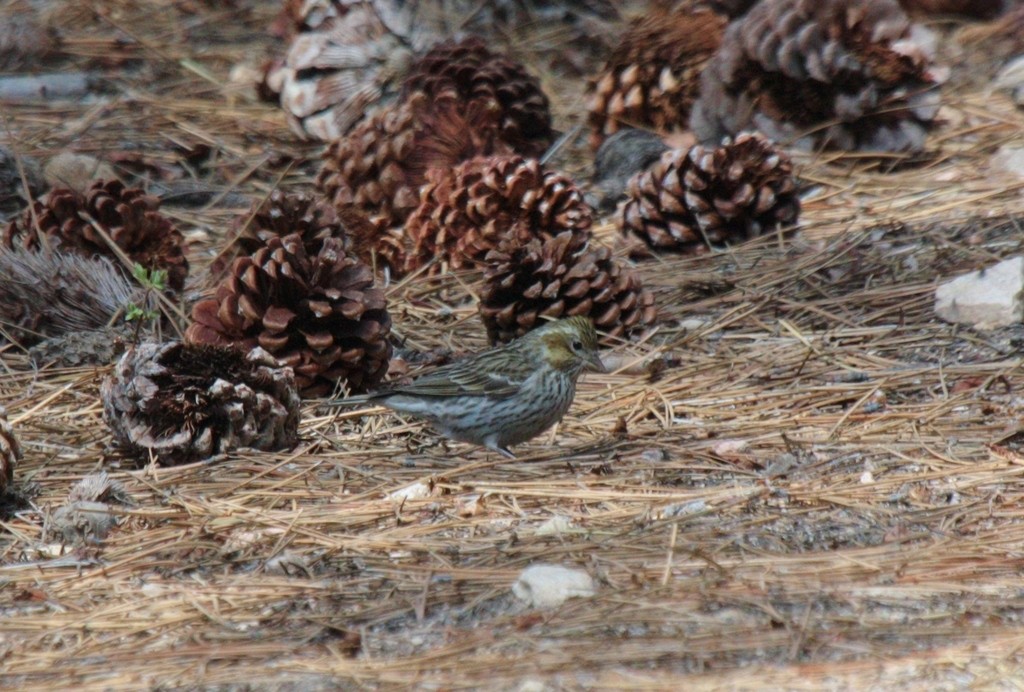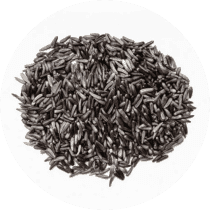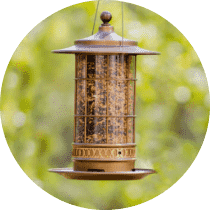Cassin's Finch
A species of Haemorhous Scientific name : Haemorhous cassinii Genus : Haemorhous
Cassin's Finch, A species of Haemorhous
Botanical name: Haemorhous cassinii
Genus: Haemorhous
Content
Description People often ask General Info
 Photo By silversea_starsong , used under CC-BY-NC-4.0 /Cropped and compressed from original
Photo By silversea_starsong , used under CC-BY-NC-4.0 /Cropped and compressed from original Description
Measurements: Length: 6.3 in (16 cm) Weight: 0.8-1.2 oz (24-34 g) Wingspan: 9.8-10.6 in (25-27 cm) Adults have a short forked brown tail and brown wings. They have a longer bill than the purple finch. Adult males are raspberry red on the head, breast, back and rump; their back and undertail are streaked. Adult females have light brown upperparts and light underparts with brown streaks throughout; their facial markings are less distinct than those of the female purple finch. Their breeding habitat is coniferous forest in mountains of western North America as far south as northern New Mexico and Arizona; also Southern California near Baja California. They nest in large conifers. They move to lower elevations in winter. Northernmost breeding birds migrate south, as do some birds throughout the range of the species; many birds are permanent residents, however. Some non-breeding birds winter as far south as central interior Mexico. These birds forage in trees, sometimes in ground vegetation. They mainly eat seeds, buds and berries, some insects. When not nesting, they often feed in small flocks. This bird was named after John Cassin, who was a curator at the Philadelphia Academy of Natural Sciences. 
Size
15 cm (6 in)
Colors
Brown
Red
Bronze
Life Expectancy
7 years
Nest Placement
Tree
Clutch Size
3 - 6 eggs
Incubation Period
1 - 2 broods
Number of Broods
12 days
Feeding Habits
Cassin's Finch's diet primarily consists of seeds, quaking aspen buds (up to 94% in spring), cottonwood and green manzanita buds, fruits like cotoneaster, mulberries, firethorn berries, grapes, and apples, as well as some insects, mainly moth and butterfly larvae during summer. They forage on the ground or pull seeds from cones, join mixed-species flocks, and seek mineral deposits for salt.
Habitat
Cassin's Finch principally dwell in the high-elevation conifer belts of western North America's interior mountains. In breeding season, they are found at elevations from 3,000 to 10,000 feet, preferring habitats of mature lodgepole and ponderosa pines. Their presence is also noted among various pine, fir, spruce, and aspen forests. Some inhabit sagebrush shrubland with juniper. During winter, they descend to lower levels, expanding their range southwards into Baja California and mainland Mexico.
Nest Behavior
The female cassin's Finch selects the site and constructs the nest rapidly, within days. Nesting can occur in close proximity if the timing of egg-laying varies. Males tolerate this provided one pair is further along. The nest-building usually starts before egg-laying, which follows a concise schedule, and both parents participate in caring for the young.
Nest Characteristics
Cassin's Finch's nest is typically located high in a conifer tree, often on a side branch, 15 feet or more above ground. The nest is built by the female, made from twigs, weed stems, lichens, and lined with fine rootlets, grasses, bark, animal hair, feathers, even bits of rope. It is loose and frail, about 2 inches across and an inch deep.
Dite type
Granivorous
People often ask
General Info
Feeding Habits
Bird food type

Black Oil Sunflower Seeds

Hulled Sunflower Seeds

Nyjer
Bird Feeder Type

Large Tube Feeder

Small Tube Feeder

Large Hopper

Small Hopper

Platform
Sounds
Song
Recording location: United States
Behavior
Cassin's Finch display a distinctive undulating flight pattern, characterized by rising during flaps and dipping in glides. During spring, pair formation is marked by males defending nesting territories, chasing rivals away, yet tolerating neighboring nesters as incubation begins. These birds adopt specific postures for threat displays, extending necks and pointing closed bills at adversaries. The females can puff out certain feathers to signify non-threatening status. Nesting cassin's Finch form monogamous pairs for raising young but may engage in extra-pair mating. Post-breeding season, they typically join mixed-species foraging groups. They are subject to predation by various avian and mammalian predators and exhibit subtle, soft alarm calls when threatened.
Species Status
Not globally threatened.
Scientific Classification
Phylum
Chordates Class
Birds Order
Perching birds Family
Finches Genus
Haemorhous Species
Cassin's Finch